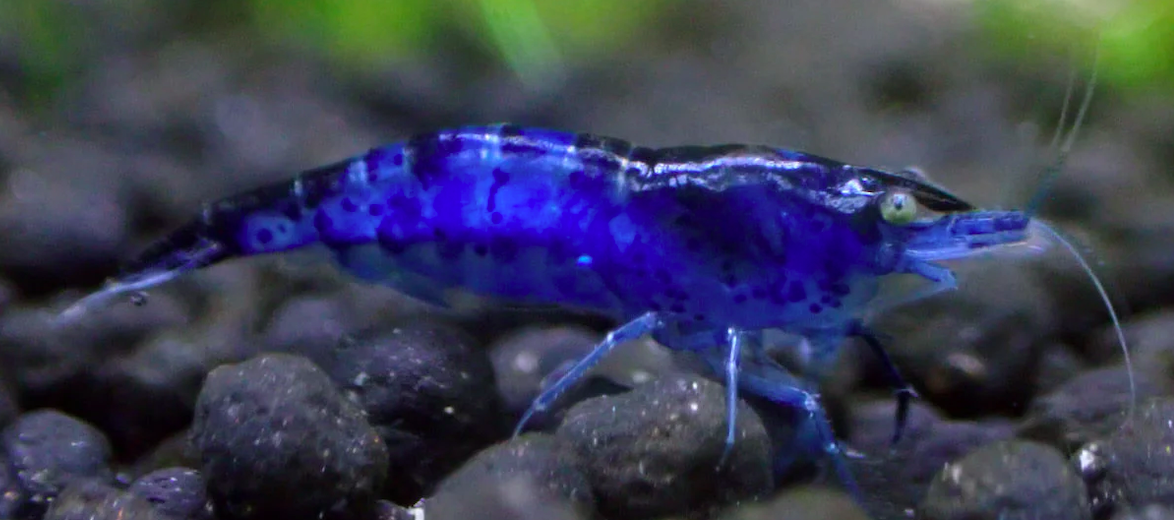
The shrimp is a diverse and globally populated crustacean that is found in both fresh and saltwater environments. There are approximately 2,000 identified species of shrimp in the world. As abundant as these critters are, they are under the constant threats of overfishing, habitat destruction, pollution, and climate change. They are listed, based on the species, anywhere from Least Concern to Critically Endangered by the IUCN.
First the Stats…
Scientific name: Caridea
Weight: Up to 11.29 ounces
Length: Up to 13 inches
Lifespan: Up to 6 years
Now on to the Facts!
1.) Their brains may be small, but they can still exhibit complex behaviors.
2.) Some shrimp, dubbed cleaner shrimp, actually do a special enticing dance to bring large and small fish closer in order to clean them of parasites and dead scales. Most of the time, the shrimp are not eaten by the fish, but accidents do happen.
3.) Even though they can move forward, when threatened, they dart backwards, with the help of their strong tail.
4.) The pistol shrimp is capable of producing a sound reaching 218 decibels! This is louder than a jet engine. They are even able to break glass. For this reason, people wanting to keep them in aquariums need to house them in acrylic enclosures. The bubble that is created by the snap is up to 18,000°F!
5.) Shrimps tend to be high in selenium, a special antioxidant mineral that can stimulate enzymes that fight cancer-causing free radicals and limit or even stop tumor growth.
But wait, there’s more on the shrimp!
6.) Shrimp species, as a whole, are typically scavengers that feed on everything from decaying plant matter, to detritus, to carrion (dead animals). Some species will hunt fish though.
7.) In 2010 the total commercial production of shrimp was almost 7 million tons!
Did you know…?
The shrimping industry brings in around $50 billion a year!
8.) Larger shrimp are often referred to as prawns.
9.) The anatomy of a shrimp consists of a head and thorax which are fused together to comprise the cephalothorax, and a long, narrow abdomen – often referred to as the tail.
10.) The shell that protects the cephalothorax is harder and tougher than the shell that protects the abdomen on the shrimp and is termed the carapace.
But wait, there’s still more on the shrimp!
11.) Oxygenated water is pumped over the gills by means of their moving mouth parts.
12.) Their compound eyes that have panoramic vision, are very good at detecting surrounding movement.
Did you know…?
Nearly 1/4 of the identified shrimp species are found in freshwater.
13.) The antennae of a shrimp is used not only for feeling their way around, but also for smelling and tasting potential food and picking up smells in the water.
14.) The long antennae help the shrimp orient itself with its surroundings, and the short antennae help determine the suitability of food.
15.) A shrimp has 8 pairs of appendages attached to their cephalothorax. The initial 3, called maxillipeds, which is Latin for “jaw feet”, are used as mouthparts.
But wait, there’s still a little more on the shrimp!
16.) The remaining 5 pairs of appendages, called the pereiopods, are used for forward movement.
17.) Shrimps have been found at depths of up to 16,000 feet, in the ocean.
18.) Their are 2 species of Merguia which are semi-terrestrial and spend a great deal of their life on land in mangrove habitats.
19.) The colonies of snapping shrimp are a large source of noise in the ocean and can even interfere with sonar and underwater communications.
20.) Of the 2,000 known species of shrimp, only 20 of these species are commercially fished.
Now a Short Shrimp Video!
Be sure to share & comment below! Also, check out the Critter Science YouTube channel. Videos added regularly!
Want to suggest a critter for me to write about? Let me know here.
Think you know a lot about critters? Try your hand at these fun, free quizzes:



